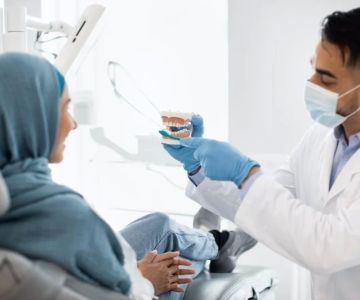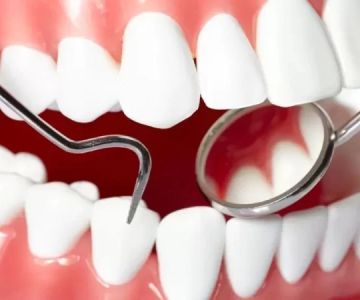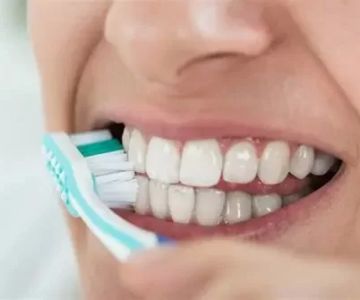When Was Oral Hygiene Declared a State of Emergency?
Oral hygiene is an essential part of overall health, yet for many years, it has been underestimated in its importance. Throughout history, various societies and governments have slowly recognized the critical connection between oral hygiene and general well-being. In recent decades, however, oral hygiene has been propelled into the spotlight, with some countries even declaring it a "state of emergency" in the face of alarming statistics. This article explores when and why oral hygiene was declared a state of emergency, examining the root causes of the crisis and the far-reaching consequences it has had on public health systems.
1. The Growing Problem of Oral Health in the U.S.
In the United States, oral health has long been a matter of concern. While dental care has improved over the years, the numbers surrounding oral health still paint a grim picture. According to the Centers for Disease Control and Prevention (CDC), nearly half of all adults in the U.S. suffer from some form of gum disease, and tooth decay remains the most prevalent chronic disease among children. These alarming statistics highlighted the urgent need for a national push towards better oral hygiene practices and preventive care.
Many American adults and children continue to neglect their oral hygiene, with some failing to brush their teeth twice a day or skipping routine dental check-ups. Poor oral hygiene habits have led to an increase in dental-related emergencies, rising costs for treatments, and overall health concerns. The fact that oral hygiene has been linked to several systemic diseases, such as heart disease, diabetes, and respiratory infections, only added to the gravity of the situation.
2. The State of Emergency in Oral Hygiene
The formal declaration of a "state of emergency" surrounding oral hygiene is a relatively recent development. In 2018, the American Dental Association (ADA) launched a campaign to address the growing concerns about the state of oral health in the country. Their findings were based on studies that showed that nearly 70% of Americans experience some form of tooth decay by age 19, and millions of children in low-income areas lacked access to proper dental care.
While not an official "state of emergency" declared by the government, these alarming statistics caught the attention of health officials and lawmakers, prompting them to call for immediate action. The state of oral hygiene was declared a public health crisis, with calls to improve access to care, particularly for underserved communities. The ADA’s campaign sought to raise awareness about the importance of preventive care, such as regular brushing, flossing, and dental check-ups.
3. Factors Contributing to the Crisis in Oral Health
Several factors have contributed to the crisis in oral health in the U.S. These include socioeconomic barriers, lack of education on proper oral hygiene practices, and insufficient access to affordable dental care. In many low-income areas, residents do not have access to dental insurance or affordable dental services, leading to untreated dental issues that worsen over time.
Additionally, the rise in sugary food and beverage consumption, combined with a lack of proper oral hygiene habits, has compounded the problem. With sugary snacks and soft drinks being more accessible than ever, many children and adults alike have developed a diet that promotes tooth decay. While awareness campaigns are helping, the overall access to education about the risks of poor oral hygiene still remains insufficient for certain populations.
4. The Impact of Oral Hygiene on Overall Health
Oral hygiene is about more than just preventing cavities and gum disease. Research has shown that poor oral health can lead to serious systemic health issues. Conditions like heart disease, stroke, diabetes, and even respiratory illnesses have been linked to poor oral hygiene. The bacteria found in the mouth can travel into the bloodstream, causing inflammation that can exacerbate these conditions. In particular, gum disease has been strongly associated with an increased risk of heart disease, which has led to significant concerns among public health officials.
One of the key issues is that many individuals do not understand the far-reaching effects of poor oral health. As a result, they may ignore warning signs like bleeding gums, persistent bad breath, or tooth sensitivity. Without intervention, these minor symptoms can escalate into major health problems that not only affect the mouth but can also lead to expensive and sometimes life-threatening conditions elsewhere in the body.
5. Efforts to Improve Oral Hygiene Awareness
To combat the state of emergency in oral hygiene, various health organizations have implemented campaigns to educate the public on the importance of proper oral care. The ADA’s efforts, for example, have included initiatives to encourage families to adopt healthier habits, such as brushing for two minutes twice a day, reducing sugary snack consumption, and seeking regular dental check-ups. Schools and community centers have also become key players in promoting oral health education, especially in underserved communities where access to dental services is limited.
Moreover, government programs such as Medicaid and the Children’s Health Insurance Program (CHIP) have expanded to provide dental coverage for low-income families, helping to address disparities in access to care. These efforts aim to ensure that people from all socioeconomic backgrounds have the resources to maintain good oral health, ultimately improving the nation’s overall health.
6. The Role of Technology in Improving Oral Health
Technology has also played a role in advancing oral hygiene efforts. With the advent of dental apps and smart toothbrushes, individuals can now track their oral care routines more easily than ever before. These technological innovations provide reminders to brush and floss regularly, and some even offer feedback on brushing techniques to improve the effectiveness of daily routines. Furthermore, advances in dental diagnostics and treatments have made it easier for professionals to detect oral health issues early, making treatment more effective and less costly in the long run.
Smart dental care products can also bridge the gap for those who have limited access to dental professionals. Devices that can detect early signs of gum disease, cavities, or even oral cancer can help individuals take preventive measures before the problem becomes more severe. This kind of technological intervention is particularly important for people in rural or underserved areas where dental care may not be readily available.
Conclusion: The Road to Better Oral Health
The state of emergency in oral hygiene highlighted the pressing need to address the challenges surrounding dental care in the United States. With factors such as socioeconomic barriers, inadequate education, and insufficient access to care contributing to the crisis, it’s clear that urgent action is needed to promote better oral health practices. Efforts to raise awareness, improve access to care, and leverage technology are all crucial steps toward achieving better overall health outcomes for all Americans.
As you consider improving your oral hygiene, remember that small changes—such as brushing twice a day, eating a balanced diet, and visiting the dentist regularly—can have a huge impact on your health. For more information on how to maintain healthy teeth and gums, visit Dentistry Toothtruth, where you can access the best resources, services, and products to support your oral health journey.
SEO Title: When Was Oral Hygiene Declared a State of Emergency?SEO Keywords: oral hygiene crisis, oral health emergency, importance of oral hygiene, oral health public health crisis, improving oral hygieneSEO Description: Discover when oral hygiene was declared a state of emergency and learn about the importance of maintaining good oral health. Understand the risks and actions taken to address this issue.






 NeighborHealth2.0 (242 review)
NeighborHealth2.0 (242 review) Romani Orthodontics4.0 (198 review)
Romani Orthodontics4.0 (198 review) Valleywise Community Health Center - Mesa3.0 (252 review)
Valleywise Community Health Center - Mesa3.0 (252 review) Christensen Orthodontics5.0 (108 review)
Christensen Orthodontics5.0 (108 review) Gentle Dental West Roxbury4.0 (285 review)
Gentle Dental West Roxbury4.0 (285 review) The Smile Institute Advanced Dentistry & Orthodontics4.0 (256 review)
The Smile Institute Advanced Dentistry & Orthodontics4.0 (256 review) The Importance of Oral Health Education During Pregnancy for a Healthy Pregnancy
The Importance of Oral Health Education During Pregnancy for a Healthy Pregnancy Best Tips for Brushing Your Teeth Properly for Healthy Gums: Essential Techniques for Oral Health
Best Tips for Brushing Your Teeth Properly for Healthy Gums: Essential Techniques for Oral Health Why Skipping Dental Checkups Can Lead to Bigger Oral Health Problems
Why Skipping Dental Checkups Can Lead to Bigger Oral Health Problems Advantages of Porcelain Dental Restorations
Advantages of Porcelain Dental Restorations How Can Diabetes Cause Tooth and Gum Problems? Preventing and Managing Oral Health Issues
How Can Diabetes Cause Tooth and Gum Problems? Preventing and Managing Oral Health Issues Healthy Habits for Promoting Good Oral Health and Hygiene: Tips for a Healthy Smile
Healthy Habits for Promoting Good Oral Health and Hygiene: Tips for a Healthy Smile